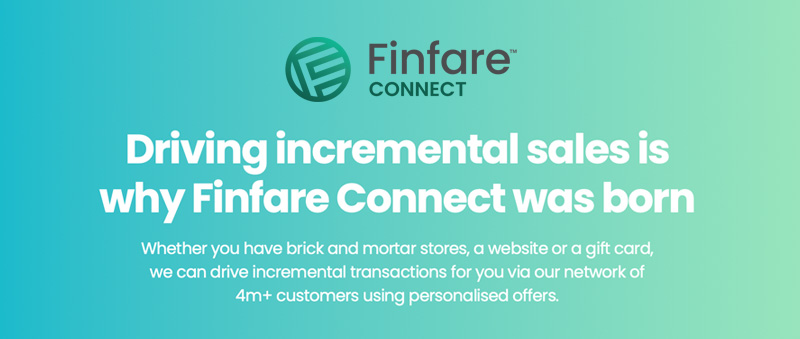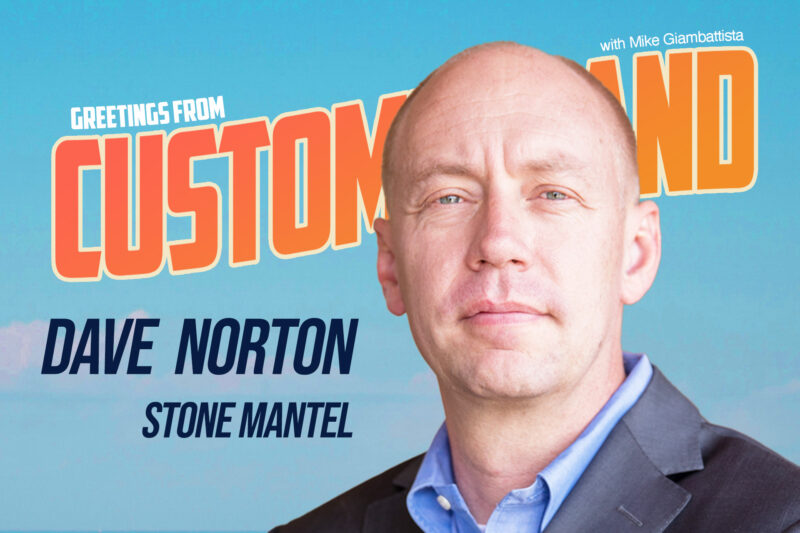In this episode, we discuss the current and future state of Customer Experience (CX) with Dave Norton, Founder & CEO of Stone Mantel. Our conversation centers on the importance of agility in CX design, challenging the reliance on traditional metrics like Net Promoter Scores and customer personas. Dave shares insights into adopting a proactive and thoughtful approach to CX, one that is responsive to evolving market demands and anticipates future trends.
We also examine how consumer expectations have shifted in the wake of COVID-19, emphasizing that effective CX goes beyond mere customer service to become a fundamental element of business strategy. The discussion includes perspectives on changing views of frontline work and the need for strategies that ensure engagement with consumers and employees remains relevant and impactful. The goal is to highlight approaches that build genuine, long-term relationships with customers, contributing to loyalty and business growth.
Additionally, we explore the role of contextual data in advancing data analytics. Dave also discusses the importance of integrating context into predictive models and AI to improve the interpretation of consumer behavior. This segment aims to provide a clearer understanding of how contextual data can be leveraged to enhance customer engagement and inform more effective business strategies. The conversation is intended for listeners looking to deepen their understanding of CX’s role in business success, without resorting to exaggerated claims or promotional language.
This episode of Customerland is sponsored by

Read the full transcript below
Mike Giambattista
I’m really intrigued by what I’ve seen of your methodology and I’d love it if with no intention of making this all about Stone Mantel but what I and kind of soft promotion for what you do. But, on the other hand, I think your approach is uniquely practical and, um, and you know we have a good chunk of our audience and readership are cx practitioners, who are largely really smart people, um, really trying hard to do a good job for their companies. Um, but, as you mentioned, a lot of the tools and mindsets that design those tools are, you know, from a decade or two ago and, um, whereas you know, technology’s enabled all kinds of really cool things in the meantime, the mindsets behind experiences are still largely being measured by old metrics.
Dave Norton
Yeah, I mean. The classic example of that is NPS itself, which was designed to measure loyalty for a world in which people tried to create loyalty by creating scarcity. Well, we don’t do that anymore. There’s no scarcity anymore. You can. There’s an abundance of products and solutions that are out there and you can’t say, you know the reason. You know the reason why they call them detractors is because you’re supposed to eliminate them. You’re supposed to get rid of a certain amount, a base of your customers, you know, like make them go somewhere else. That that’s that would be folly, uh, today, and we simply wouldn’t do it.
Well, you know, I think one of the one of the biggest um differences between what we’re talking about and what has traditionally been described as CX is that we believe that experience strategy really has to do with understanding the near future needs of consumers.
The strategist needs to be able to focus on and understand the evolving and changing needs of customers, how channels, how solutioning, how training are going to affect the experience in the future. Um, and most of what CX has been focused on historically is designing for the ideal. So we try to come up with the ideal experience in CX that will, that will be somewhat timeless, that will fit Well. That’s a very different mindset than how do we think about the near future needs, where things are headed, how do we stay ahead of the curve uh with for our customers and that? And that, I think, is one of the biggest challenges uh, that uh we face today, as that people face as CX professionals, is that they are constantly trying to design for the ideal, when in fact what the company really needs is insights about where the customer is going to go going forward. So everything kind of stems from that going forward.
Mike Giambattista
So everything kind of stems from that, you know. I would just layer in one additional set of criteria and that is consumer expectations. You know for which affect, you know what they need to get done, what they perceive they need to get done and how they want to get it done. And those are changing wildly fast, increasing almost faster than companies can keep up.
Dave Norton
Yeah, absolutely, and they will continue. They will continue to evolve.
Mike Giambattista
Which kind of means there’s going to be an increasing gap between. Increasing gap between you know, if, if, if, consumer, if companies just can’t keep up and yet consumers are increasing, they’re raising their expectations exponentially in some cases. You know there’s a lot of, there’s a lot of problem areas, but that creates a lot of opportunities too. The other thing you mentioned that it’s worth touching on here is you said that that Stone Mantel doesn’t really focus on cx per se, but of course, a lot of what you do touches on it. I mean, if we’re honest, so much of cx right now is really more about customer service.
Yes, it is yes, there are the broader definitions are still in play and they still are meaningful, but, um, look at what most CX professionals spend their days doing. It has percentages to this, but it has largely to do with customer service and customer success, and yet there are. You know how much more experience lives outside of that little definition. Is a lot of stuff. It’s a lot of stuff. So I think that’s, for me, what I appreciated about what I understand about your approach.
Dave Norton
Absolutely. I think that you hit one of the important nails on the head, and certainly there is. There is an important role for CX to play in supporting customer service. We’re coming out of the post-COVID time period where frontline employees were treated as essential workers and now many of them do not want to do those jobs. They felt abused and it is very, very difficult to maintain a certain level of quality. So there are certain needs for that type of a thing.
But to your point, the experience movement started by Pining Gilmore back in the 90s had a much broader objective and it was really about value creation. It was about having a point of view about where the economy was headed and then heading towards that point of view as quickly as you possibly could so that you could create value for the company. It was principally an argument for value creation and innovation and we need to kind of get back to that idea. And in order for, I think, for the experienced strategist to do that he or she needs to experienced strategist to do that he or she needs to, like I said before, they need to be able to articulate where it is that the consumer is going to go. Clayton Christensen many of your listeners know of Clayton Christensen what a great man and a friend of mine and he one of his key articles was skate to where the puck will be right. That was one of the key articles that I read. That kind of changed my mindset. We have to focus on the future. We have to think about what are the implications.
If we’re not in those strategic decisions around AI right now, then it means that we’re not playing the right role to support where things need to go, and the only way that I know to do that is to do primary research with consumers, and that’s one of the things that we do at Stone Mantel. On our own. We do our own primary research every year to try to understand where consumers are going to be in four or five years, and then we work with our clients to help them develop roadmaps to get to those places. Uh, you know so. So we’re not. We’re, yes, we can do a journey map, we can do great journey maps, but we’re not necessarily. That’s a means to an end. What we’re really trying to do is to help the company to transform to where it will create the most value going forward, and I think a lot of consultants would give a lip surface to that, but that’s essentially what I mean by experience strategy going forward.
Mike Giambattista
So my disclaimer on this next comment is that I mean nothing harmful or pejorative to anybody who may be listening. But I think you’re right. I mean you know most, let’s just say, cx providers to pick on somebody would probably use the exact same language to sell their services, maybe word for word. And you know it’s kind of, and you can’t say no to that. There’s, it’s a, it’s a. Yes, of course you want to track in the direction of the puck, to paraphrase um, and the practices, whatever they are, can certainly help do that to some extent.
But um, a holistic approach to creating value by understanding customers or employees short-term needs is, um, it’s not common. I can tell you that and I don’t know if anybody else is out there doing it. There certainly may be other people, but it’s not something that’s come across my radar at all and it kind of brings up like to me. There’s a couple of questions that go along with that Specifically.
You know it’s really easy if you’re a CX provider to a CX technology provider to target CX leaders, cx initiatives that you see out there and you can sell your services or your product right in there. It’s entirely different to be selling something, if you will. That’s a holistic approach to customer and employee engagement, um on a strategic level that has longer term, maybe less direct ROI um than it is to take a kind of more traditional direct approach. So so at Stone Mantel, um, who are you looking for out there? I mean, are people just coming to you saying, wow, breath of fresh air, I need the perspective? Or are you looking for, you know, certain qualities in perspective clients that will indicate to you these people are ready for the kinds of talks we need to have.
Dave Norton
What we’ve realized over the years is that we have to actually train our customers, and so there’s actually two sides to our company. There is the side that’s primarily focused on training individuals. We have a program we call the collaboratives, where companies sign up and a lot of their CX employees participate in the program and we study the most important principles of experience strategy and they do projects and they solve for things. Those tend to be our best clients in the future, because they’ve had the paradigm shift. They understand all of the elements and, as they grow and evolve in their roles, they understand how to deploy us. I think there’s a lot of senior leadership out there that when they hear what we’re doing, they’re like, yes, let’s do it, but they still don’t know how to get their arms around it. So the collaboratives has been, and our certification program has been, the way that we’ve helped people to understand what experience strategy is and then, as they have initiatives that come up that we can help them on, we do our very best to, you know, win the day and support them.
Not every initiative that we do is, um complete company transformation, um, you know, we do some of that. Some of it is just solutioning transformation right. That then has the potential in the future to lead to more holistic change within the organization. The other thing that you know like I think I’ve kind of hit on this, but I’ve kind of hit on this but internal training is also really important. A lot of these folks, they’re just learning as quickly as they possibly can, and so they need constant updates and training in order to be successful. So it’s a lot of educating. Honestly, we do a lot of educating.

Dave Norton
Sure. So some of your listeners will be familiar with the idea of jobs to be done, which was popularized, although it really wasn’t coined by Clayton Christensen. It was popularized by Clayton Christensen and he coined the term disruptive innovation and said that the solution, the anecdote to being disrupted by new entrants was to go after the job the customer wanted to get done. So the customer. So it’s a variation on needs analysis, but it’s a focus on things that the customer will actually hire the company to do. That’s one way to look at it and, and historically, organizations that have done jobs to be done work have been very focused on tasky stuff like help me get the food delivered to your house faster, um, what we call functional jobs to be done. But experiences are every bit as much about emotional jobs, social jobs, and we have an HBR article about aspirational jobs to be done as well. So you, as an experienced strategist, you’re not just focused on trying to get the functional job done, you’re trying to figure out how to get the emotional, social and aspirational jobs done as well. So one of the first things that we do and this is kind of a departure from Clayton Christensen’s work is we help companies to identify what are the functional, emotional, social and aspirational jobs that their customers are trying to get done?
And then we kind of project forward what in the near future are they going to be most focused on? Of course you have to get the functional job done for them, but that’s just kind of the starting place. So, jobs to be done, helping the company as a whole to understand what are the jobs to be done, why they’re so important that’s a very strategic goal and objective and from the CEO on down, they need to be clear on what are the functional, emotional, social and aspirational jobs that customers are trying to get done or will be trying to get done in the near future. So that’s one of the key principles.
Another key principle is that value is maintained over time through time. That didn’t come out really well, but value is created through time value. If the consumer does not want to spend time with you, they will cancel that subscription, they will close that account, they will stop frequenting that store. If they don’t want to spend time with you over time, you will lose them. Now the reason why that seems kind of obvious but the reason why it’s important is to think about is that most companies are trying to actually eliminate the time that consumers spend with their solutions, so we want to use technology to reduce the amount of time that it takes for them to do a transaction. We want the stores to be as quick as possible, the interactions to be as simple as possible. There is something to be said for that.
However, if you don’t know what gets people to want to spend more time with you, you can’t create ongoing value, and time well spent is far more important than loyalty. Loyalty is actually as a measure. It’s a marketing measure. It’s not an experience measure, and we would argue that loyalty is a byproduct of time well spent.
If people don’t feel like the time that they spend with you is valuable, how can they be loyal to you, especially with so many different products and solutions that are out there? It’s it’s not like the old days where they only had one choice for your t-shirt. You know that that doesn’t. That doesn’t exist anymore. They’re inundated with solutions. So if they if it’s not about I mean, it’s great if they’re loyal, but your focus needs to be on creating time value. In some cases that’s about eliminating steps, but most of the time that’s just table stakes. We need to be able to get them to want to frequent us, to spend more with us of that time value. And I think in the early years of experience design, I think we understood that better. But with the transformation towards digital tools we’ve begun to believe that it’s all about removing friction, and sometimes just a little bit of positive friction is actually a good thing because it causes people to want to pay attention to you.
Mike Giambattista
And it can create a little dramatic tension if you want it to. There’s all kinds of good reasons for friction. Interesting. It’s not a side gig. So it’s not a side gig. I have the privilege of being a student advisor to a group of students at the University of Applied Technology in the Netherlands who are working through real-world experience issues at their own companies. It’s really a neat program and the assignment the initial way to approach understanding of these experiences was to create a journey map, make some sense, look for the high points and the low points, see what you can do to shave down the low points and see what you can do to elevate the high points, which it’s a simplistic approach, but it’s a good one as a starting point. But interestingly, in so many of these conversations with the students, they’re only looking for those high and low nodes and there’s a. There’s a strong correlation in their minds, I think, with shaving down the low nodes correlates to a better experience and it can. But uh, you know, time time well spent is not a is doesn’t equal that no, it doesn’t, no, it, no, it doesn’t.
Dave Norton
And you know, many of our CX friends will talk about how they want to identify pain points when they’re doing their journey mapping. It’s the same type of exercise. Of course, we want to eliminate pain points. What we may not necessarily want to do is eliminate all touch points it’s a different thing and yet we have to figure out what we’re going to do in that touch point. That’s going to create value, and what I mean by value is time value that makes people say, yeah, I want to spend a little bit more time with you. You’re interesting, you benefit me in some way. I win when I’m with you in some way, shape or form, and it doesn’t always have to be kind of like that climactic moment where everything is so amazing. You know, people can only take so many climactic moments in a day, but there are other things that you can do and they can be very, very subtle.
Mike Giambattista
So can you give us an example of somehow that might be addressed If somebody is looking to create more time value in a real-world way, something from what Stone Mantel has done in the past?
Dave Norton
There’s uh, you know there’s all kinds of different things. One of the things that we’re working on right now is with a home builder group, and they are, um, they’re looking at the decision-making process that people go through to build a custom home, and what they’re realizing is that some of the steps that they were trying to eliminate are things that people actually need to do. So what they’re starting to do is incorporate into the experience certain reflection exercises that cause the individual to ponder a little bit and think about their life a little bit, stop and reflect. It’s amazing how that completely changes them from oh, I got to get this done, I got to get this done too. Hey, this is an important decision I’m making and I appreciate you giving me the opportunity to kind of reflect on this, and so that’s something that they’re designing into their solution. Time well spent. It’s not driven by the company necessarily. The individual gets to decide what they’re reflecting on, but still, that is time well spent.
Mike Giambattista
Really interesting I’m. I’m reflecting on some of my own time well spent evaluations with companies that I deal with. Uh, time well spent evaluations with companies that I deal with, and so much of the way I’m evaluating them has little to do with the actual transaction. It’s got to do with the ancillary stuff, the stuff that got me there in the first place and the stuff that kind of escorts me through this enriching relationship. Um, and very little of it has to do with you know how easy was the transaction. Of course that’s there a business relationship or an employee relationship or any relationship for that matter. That um, probably way, way more heavily than the practical when it comes down to it yeah, absolutely, absolutely so.
Dave Norton
so time value for some, some organizations, it’s going to be time well saved. Now, there’s nothing wrong with saving people time, as long as they value that savings. If they don’t even acknowledge it, then there’s a problem Time well spent, which means that they actually want to maybe spend a little bit more time with you if they could. And then the third thing that we look at is time well invested. So, especially for transformational type offerings when you’re going to college, you’re getting educated, you’re, maybe you’re setting up your finances for this first time those types of experiences you’re willing to invest upfront time in hopes that down the road there will be a payoff for you. And it’s a little bit different than time well spent where it’s just like you know, I’m enjoying this.
I’m going to hang around a little bit longer. I like this movie. I’m going to keep watching this movie more. I’m learning something. I’m going to benefit from this. I’m going to develop a skill. That’s what time well invested is, and so there’s. All three have to do with creating value through time, but uh, but there are some differences in the way you approach things, depending on your offering.
Mike Giambattista
You know it’s been well said by basically everybody in this space and related spaces that that people’s attention spans are just not what they used to be. First one to admit that but it goes kind of a corollary to that is that we learn and we understand differently now than you know, even 10 years ago, five years ago maybe, maybe, and I know you’ve done some work on the ways people understand broadly these days. I’d love to talk about that a little bit. You know you’ve broken things down into certain categories of, you know, mental state, I guess. But sure, let’s talk about that because I think that’d be super helpful for people who are just, you know, is it really about just catching somebody’s attention with, you know, the big red sign?
Dave Norton
Yeah, no, it’s definitely not about just catching them with the big red sign. It’ll frustrate them with all their entire lives. They’re like billboards driving down the road, and so you have to be really careful about that. We started doing some research about 10 years ago where we were looking at digital engagement, and each year we’ve built on that research, and one of the key early findings that has continued to grow over time is that consumers people get into modes, and we don’t talk about this nearly enough. We talk about habits, we talk about moments, we talk about phases, we talk about stages. There’s lots of things in CX that people talk about, but what people spend most of their time doing today is getting into modes.
Right now, you and I are in podcast mode. We know what that looks like. We’ve done it before. You have a successful podcast, I have a successful podcast and our environment is set up for it. We’ve got the microphones in front of us, we’re looking at each other. We understand how to build on each other’s conversations because it’s kind of a learned thing. We know how to do that. So we’re in podcast mode right now, but when I finish with this episode, I’m going to switch over to writing mode and I’m going to change my environment to support that mode, and then I’m going to be in sales mode. I’ve got a couple of business pitches that are coming up and I want to, and this is the way that our lives are managed today, and the same thing’s true for our personal lives. We know what parenting modes are, we know what mommy mode is, we know what daddy mode is, we know how to kind of manage work mode with parenting mode, because we’ve been through a crisis.
A mode is a mindset and a set of behaviors that people get into temporarily in order to help them to maximize their time, and so and the more they get into that particular mode, the better they get at that that mode. Now I guarantee you that there are very, very few organizations out there, besides those that participate in our collaboratives, that are actually studying the modes that their customers are getting into. But this is how consumers spend time. People don’t get into moments nearly as often as they get into modes. They’re in modes all the time.
They may have one or two moments a week and that’s it, but we design for moments, we don’t design for modes. So that’s one example of how we need to be looking forward instead of looking backward in the way that we think about consumer behavior and it’s a big topic within CX, um behavior change. You know our behavior change leader within our organization. She’s really focused on thinking about time, value and thinking about modes and thinking about the future of how people are going to behave. You know, um, rather than thinking about kind of what’s the next habit that we can create or the next micro moment that we can create, which are not necessarily what consumers want, consumers want us to support their modes.
Mike Giambattista
My background is advertising and marketing, so we’ve pulled consumers apart every which way, looking at the best ways to engage them. I can’t think in my very long career that we’ve ever approached it from a mode standpoint, and yet I’m you know, of course, uh, describe the mode you’re in and that’s, that’s how you have to speak to your customer, and if that’s who you’re, because the way you speak to me in dad mode and what I need to be thinking about at that moment is going to be very different from the way you’re going to want to speak to me in pre-sales pitch mode Right, right, I’m not the same person for better or worse, exactly.
Dave Norton
You know and this is common you, this is the way you live your life, mike. You know, you’re that you, you get into different modes. You’re you may have a grandchild that comes running in at any moment and then you’re a little bit into grandpa mode. You know, right, right there, and then I know what that’s like and so, um, yeah, so I think this is really important. I think that in the traditional um retail environment, with the really smart salesperson who was observing the behavior of the individual as she walked through the store, they could pick up on cues and say and they might not have called it mode, but they could pick up on cues to understand what she was thinking and therefore how to support her. Today we don’t have that kind of relationship with consumers, but we can ask them about the modes that they’re in and support them so, um, we have to talk about ai at some point in this conversation, because you know we wouldn’t be anything if we didn’t.
Mike Giambattista
Um, but I think I think you bring up a really interesting point. I I was talking to another colleague just yesterday as a matter of fact, day before yesterday, I think who’s done a lot of research in consumer behavior and was making the point that, whereas AI is generating all kinds of great efficiency enhancers, generative AI it’s writing and graphics and now video and all that stuff. It’s really cool but what he finds is that so much of it is lacking real human feel, if you will. You know, it’s just not quite there. You have to look for it. It can get 90% there, 95% there, maybe it’ll get 99.9% there at some point, but at this point it’s just not there because it can’t suss out where we are. And I would love to throw a couple of tests at the ai tools that I use and just see if we, if we start indicating some of these modes, will its output differ. Can it? Can it deal with that? Yeah, my thinking right now is it can’t. No, it probably can’t.
Dave Norton
Yeah, so this kind of gets to you know, I mean, ai is basically predictive algorithms. On the way that we think about data analytics is that companies have referenced, have focused on things like demographics and preferences, preferences and, uh, and online behavior. As kind of the key, as kind of the core to understanding what the consumer is about and what they’re missing out on is all of the contextual data that is out there and that’s how you identify what mode you’re in, um, so time of day, what mode you’re in, um, so time of day. Time of day is a huge factor, um, and it’s something that’s fairly easy to recognize.
Day of the week, whether, um, you know, uh, there are so many different things what apps I have turned on, what apps I don’t have turned on, uh, tell so much. And we don’t have great algorithms out there and predictive tools that support context the way that we do for preferences. So you, you bought this thing or you liked this video, you’re going to like the next video and the next video, but, but that, but that’s not the same as context. It’s a very different thing, and so we’ve got to learn how to evaluate and study, through our artificial intelligence tools, context, and then we’ll begin to support modes, I think in due course.
Mike Giambattista
I think it’s going to be really interesting. I am seeing some tools out there that are able to call on some contextual signals, and it’s really interesting that when they can do that, you get a much better output, I think. But it’s not universal by any means. What you and I are talking about right here underpins so much of the actual work that marketers and CX people and advertising people and the data analysts that all support us need to be thinking about. It’s really about ways of thinking, more than it is you know which button to push, and, and therefore I think it’s absolutely vital. So, having said that, two things one, I think we should probably end this conversation in a sensible way, but two, I would love it if we could do a follow-up or, even better, a series of follow-ups, just to continue the song, cause I think it’s where it’s at.
Dave Norton
Yeah, let’s, let’s do a follow-up session and that would be a lot of fun.













